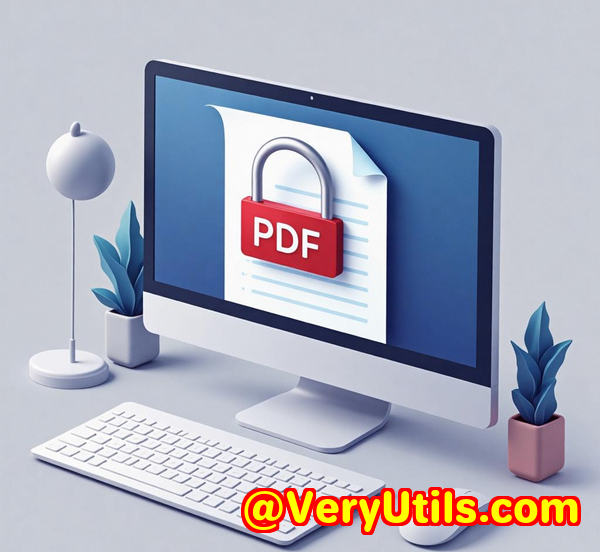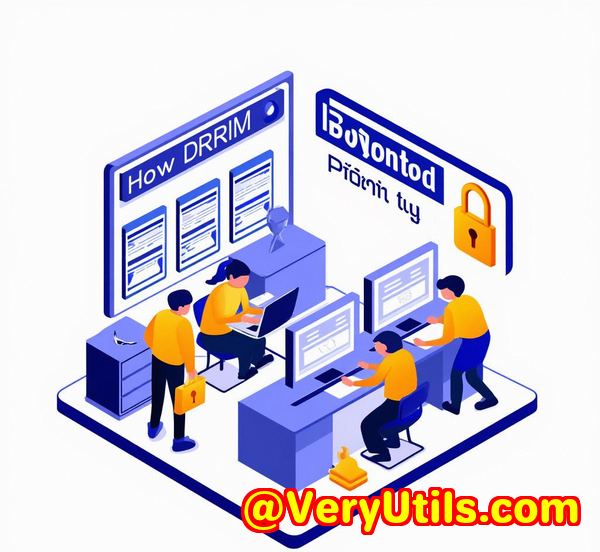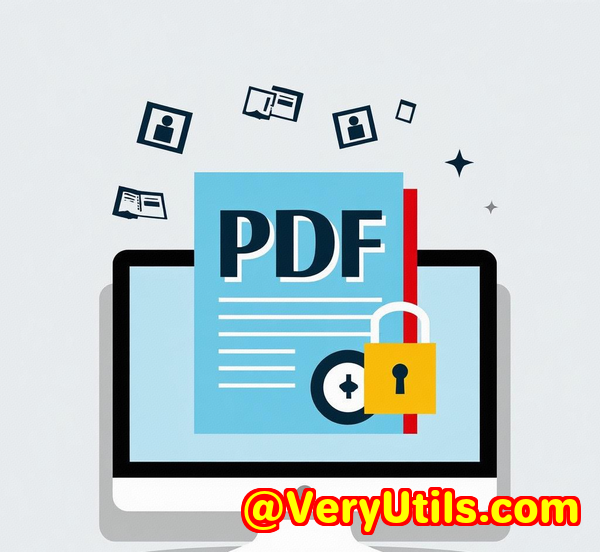How to Convert Large PDF Files to PDFA Format with VeryDOC SDKs High-Performance Tools
How to Convert Large PDF Files to PDF/A Format with VeryDOC SDK's High-Performance Tools
In today's digital world, documents are constantly being archived, shared, and stored for long-term use. But how can you ensure that your PDFs will still be readable in the future, decades from now? If you're dealing with legal contracts, academic papers, or business reports, maintaining the integrity and accessibility of your documents is vital. Enter PDF/A the ISO standard for archiving PDFs. And if you're looking for a reliable tool to convert your PDF files to PDF/A format, the VeryDOC PDF to PDF/A Converter Command Line SDK is here to save the day.

Meta Description
Learn how to efficiently convert large PDF files to PDF/A format with VeryDOC SDK's high-performance tools. Perfect for developers and anyone needing long-term PDF archiving.
Opening Paragraph (Engagement)
Every day, we handle dozens of PDF files, whether it's contracts, invoices, or research papers. But have you ever thought about what happens to these documents in the long run? Sure, they're fine for now, but what happens when the file gets corrupted or the format becomes outdated? For businesses, researchers, or anyone dealing with valuable documents, ensuring that they remain accessible years down the line is crucial. That's where the PDF/A format comes into play. This ISO-standard ensures your documents are preserved in a way that they'll look the same when opened decades from now, even if technology changes.
However, the problem many face is converting their existing PDFs to PDF/A, especially when working with large files. You could try free online converters, but they often come with limitations. Slow processing times, poor accuracy, or the inability to handle complex PDF structures. That's where VeryDOC's PDF to PDF/A Converter Command Line SDK steps in.
Body (Product Solution + Personal Experience)
I stumbled upon the VeryDOC PDF to PDF/A Converter SDK while trying to automate the archiving process for a client's vast library of PDFs. They had hundreds of legal contracts that needed to be converted to PDF/A for long-term preservation. The challenge? The files were large and had embedded fonts, interactive forms, and device-dependent color spaces. I needed something reliable, efficient, and able to handle bulk conversions.
That's when I came across VeryDOC PDF to PDF/A Converter SDK.
What Is the VeryDOC PDF to PDF/A Converter?
The VeryDOC PDF to PDF/A Converter SDK is a powerful tool that allows developers to automate the conversion of PDFs into the PDF/A format, which is specially designed for long-term archiving. This software ensures that your PDF files remain readable and formatted the same way for years to come, no matter how technology evolves.
Key Features That Stood Out to Me
Here are three features that I found particularly useful:
-
Batch Conversion
I was working with a client who had hundreds of PDFs to convert. The VeryDOC SDK made it easy to process multiple files at once. With a simple command line operation, I could convert entire folders of PDFs without needing to manually open each one. This alone saved me hours of work.
-
Color Space Management
One of the issues I ran into with other tools was that they struggled to handle device-specific color spaces. With VeryDOC's SDK, it automatically replaced these with ICC color profiles. This was key for ensuring the PDFs complied with PDF/A standards, which prohibit device-dependent color spaces. It's the kind of behind-the-scenes functionality you don't often appreciate until it works perfectly.
-
Font Embedding and Subsetting
PDF/A requires that all fonts be embedded within the file. VeryDOC ensures that even fonts that weren't previously embedded are taken care of, including subsetting non-embedded fonts. This feature was a lifesaver, as many of the documents I worked on had missing or incomplete font embedding.
Personal Experience: Time-Saving Automation
The biggest advantage of using VeryDOC PDF to PDF/A Converter SDK is its ability to streamline the conversion process. What would have taken days, I was able to do in just a few hours. The command line interface allows you to run the tool in automated scripts, perfect for batch processing. I could schedule conversions during off-hours, making it an ideal solution for businesses with heavy document workflows.
For example, I had a massive PDF fileover 300 MBthat needed conversion. With other tools, the conversion would have taken ages, and the risk of errors was high. With VeryDOC, the conversion process was quick, and the final output was flawless. All the fonts were embedded, interactive elements were removed, and the color spaces were perfectly adjusted.
Comparison to Other Tools
I've used several PDF conversion tools in the past, and while some were useful, none offered the same level of precision and speed as VeryDOC. Some free tools are fine for small files, but they often fail when it comes to handling complex documents or large batches. Not only does VeryDOC work seamlessly with large PDFs, but it also ensures compliance with PDF/A standards, making it far superior to most alternatives.
Other tools may require you to manually adjust settings or deal with broken outputs. With VeryDOC, the process is automatic, and the results are reliable.
Use Cases
So, who needs the VeryDOC PDF to PDF/A Converter SDK? Here are a few examples of people and organizations that would benefit from this tool:
-
Legal Teams: Law firms often deal with sensitive contracts and case files that need to be preserved for decades. With the PDF to PDF/A Converter, you can ensure all documents meet long-term archiving standards.
-
Libraries and Educational Institutions: Academic papers, dissertations, and archives are often stored for historical reference. This tool makes converting these files a breeze while maintaining their integrity.
-
Government Agencies: Many government agencies are required to store records for long periods. Using VeryDOC, they can convert existing PDFs into PDF/A without compromising the quality or accessibility of the documents.
-
Businesses: If your business stores contracts, financial reports, or any other type of document that requires long-term preservation, VeryDOC is the perfect solution for ensuring compliance and preventing data degradation.
Core Advantages
The VeryDOC PDF to PDF/A Converter SDK isn't just another toolit's a robust solution that offers several advantages:
-
ISO 19005-1 PDF/A Compliance: This tool ensures your documents meet the strict standards for long-term archiving. It's perfect for regulatory compliance in industries like law, finance, and education.
-
High Efficiency: It handles large and complex files quickly, reducing the time spent converting documents. Plus, it's optimized for batch processing, which is great for businesses with high-volume document workflows.
-
Automation-Friendly: As a command-line tool, it can be integrated into automated workflows. This means you can schedule batch conversions and avoid having to manually process each document.
-
Cross-Platform Support: It works on Windows 2000/XP/Vista and later systems, making it compatible with a wide range of environments.
Conclusion (Summary + Recommendation)
In short, if you're looking for a reliable and efficient way to convert your PDF files into PDF/A format, VeryDOC's PDF to PDF/A Converter SDK is a tool I'd highly recommend. It's fast, accurate, and perfect for anyone who needs to process large batches of documents while ensuring compliance with ISO standards. Whether you're in a legal, educational, or business environment, this tool will save you time and effort, letting you focus on more important tasks.
If you deal with large PDF files regularly and need them archived properly, VeryDOC PDF to PDF/A Converter SDK is a must-have tool.
Start your free trial now and boost your productivity: VeryDOC PDF to PDF/A Converter SDK
Custom Development Services by VeryDOC
VeryDOC offers comprehensive custom development services tailored to your specific needs. Whether you need advanced PDF processing for Linux, macOS, or Windows, or you require unique tools for automated workflows, we've got you covered.
Our expertise extends across various programming languages, including Python, PHP, C/C++, and JavaScript. We also specialize in custom solutions for capturing and processing documents, including PDFs, PCL, and PostScript. Whether you need bespoke tools for document conversion, digital signatures, or DRM protection, we're here to help.
For more information, please contact VeryDOC through our support centre at support.verypdf.com to discuss your project requirements.
FAQ
1. What is PDF/A, and why is it important?
PDF/A is an ISO-standardized version of the PDF format specifically designed for archiving. It ensures that documents remain readable and formatted the same way, regardless of future changes in software or hardware.
2. Can the VeryDOC PDF to PDF/A Converter handle scanned PDFs?
Yes, it can convert both normal and scanned PDFs into PDF/A format, ensuring your archived documents are properly formatted.
3. What platforms does the VeryDOC SDK support?
The SDK supports Windows platforms, including Windows 2000, XP, Vista, and later versions (both 32-bit and 64-bit).
4. Can I automate the conversion process with VeryDOC?
Yes, the VeryDOC PDF to PDF/A Converter is command-line based, making it ideal for batch processing and automation within scripts.
5. Does the SDK remove interactive content from PDFs?
Yes, the VeryDOC SDK automatically removes prohibited content, such as JavaScript and interactive forms, ensuring compliance with PDF/A standards.
Tags or Keywords
-
PDF to PDF/A Conversion
-
PDF Archiving Tools
-
PDF/A Compliance
-
Document Conversion SDK
-
Command Line



